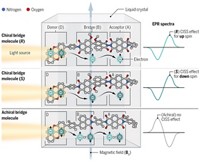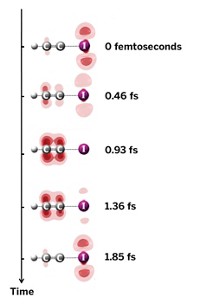Advertisement
Grab your lab coat. Let's get started
Welcome!
Welcome!
Create an account below to get 6 C&EN articles per month, receive newsletters and more - all free.
It seems this is your first time logging in online. Please enter the following information to continue.
As an ACS member you automatically get access to this site. All we need is few more details to create your reading experience.
Not you? Sign in with a different account.
Not you? Sign in with a different account.
ERROR 1
ERROR 1
ERROR 2
ERROR 2
ERROR 2
ERROR 2
ERROR 2
Password and Confirm password must match.
If you have an ACS member number, please enter it here so we can link this account to your membership. (optional)
ERROR 2
ACS values your privacy. By submitting your information, you are gaining access to C&EN and subscribing to our weekly newsletter. We use the information you provide to make your reading experience better, and we will never sell your data to third party members.
Materials
Spintronic OLED Debuts
Light-emitting diode is controlled by electron spin rather than electronic charge
by Elizabeth K. Wilson
July 16, 2012
| A version of this story appeared in
Volume 90, Issue 29
An organic light-emitting diode (OLED) whose intensity is mediated by electron spin rather than purely by electronic charge may usher in a new breed of organic displays that are cheaper, brighter, and controlled by magnetic fields (Science, DOI: 10.1126/science.1223444). Z. Valy Vardeny of the University of Utah and colleagues based their spintronic device, which emits orange light, on their previous development of an “organic spin-valve,” a switch that regulates current on the basis of the up or down alignment of electron spin. Several augmentations to the original spin-valve design, including a deuterated derivative of poly(phenylene vinylene) and a thin layer of lithium fluoride on a cobalt electrode, make it possible to inject both negatively charged electrons and positively charged electron holes into the device, rather than only electrons. The collisions of the oppositely charged particles then generate photons. An external magnetic field, which aligns the spins of the electrons and electron holes, adjusts the intensity of the light. With further research, Vardeny envisions the development of spin-OLEDs that change colors.





Join the conversation
Contact the reporter
Submit a Letter to the Editor for publication
Engage with us on Twitter